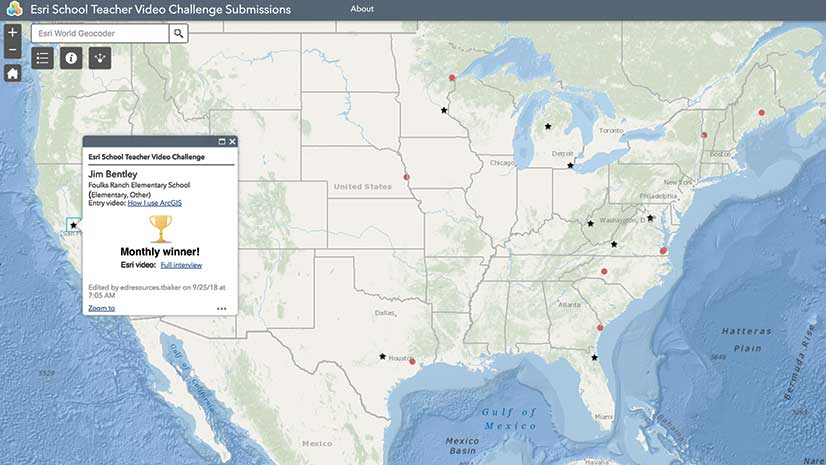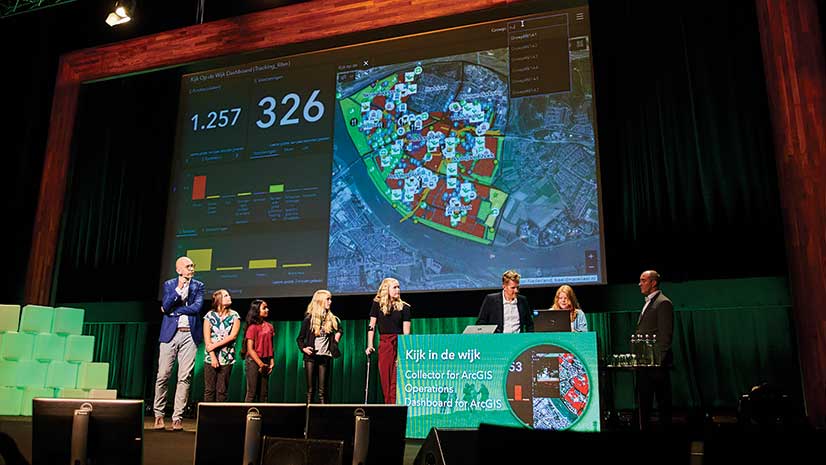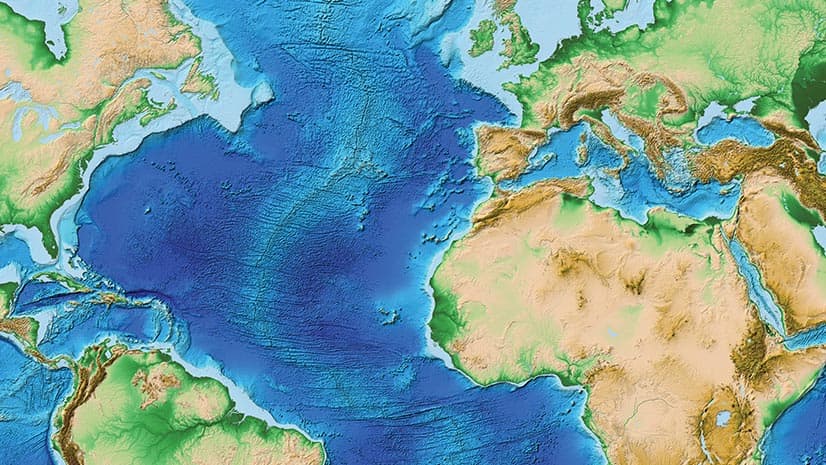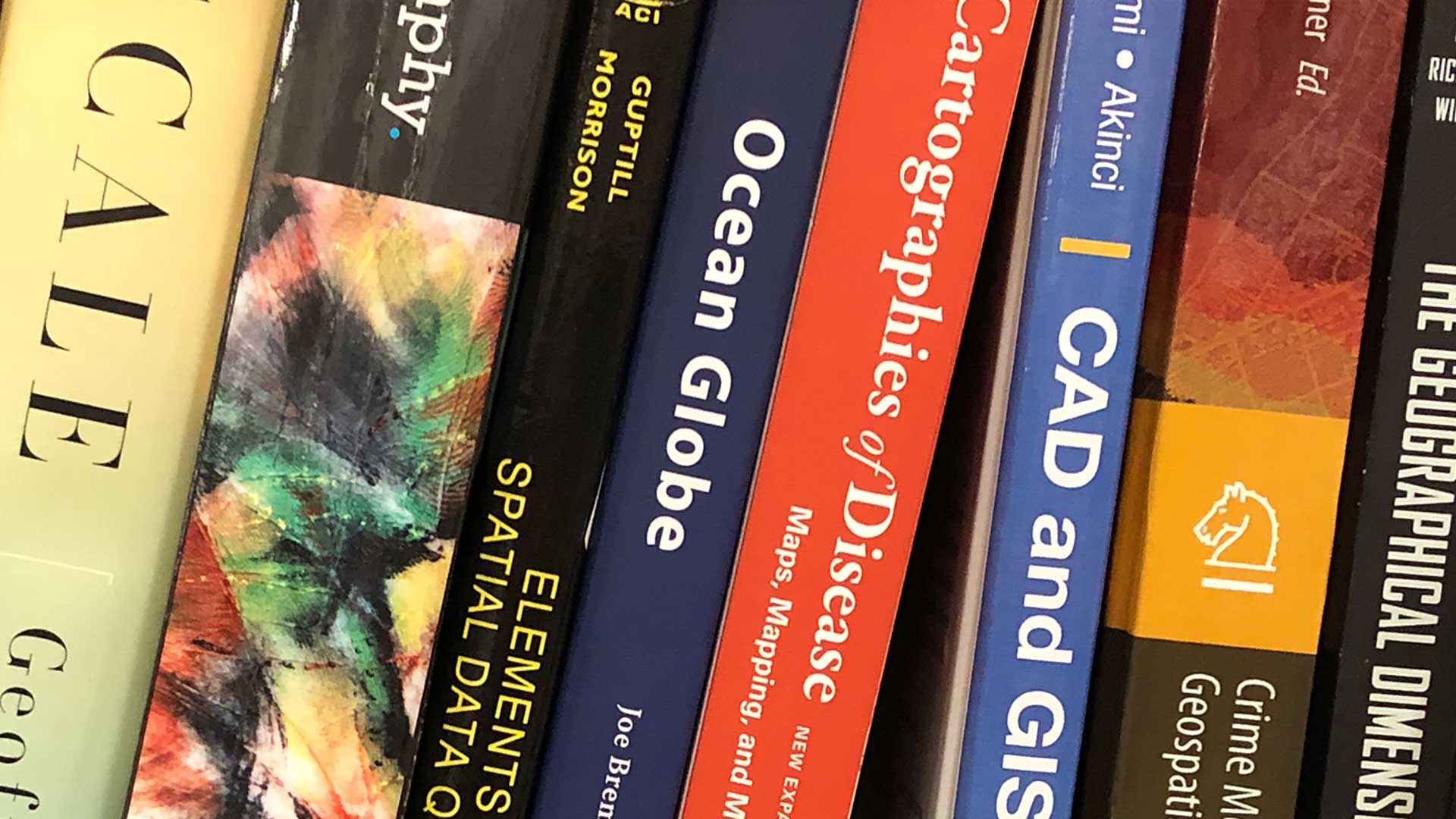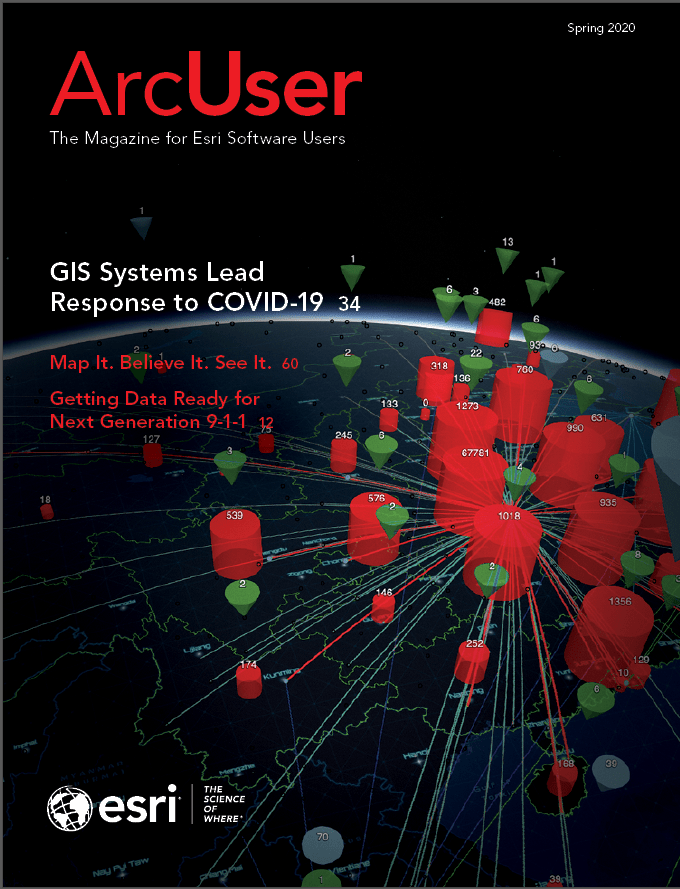There’s a wealth of demographic data from around the world available to be studied and mapped by anyone who has access to ArcGIS Online and ArcGIS Living Atlas of the World.
With cloud-based tools and content, ArcGIS Online and ArcGIS Living Atlas of the World make it easy to analyze spatial demographic data. For students using this kind of technology, learning about demographics and population change can be interesting, engaging, and informative. Students can solve problems, think critically, and strengthen their reasoning and spatial analysis skills in multidisciplinary environments.
Over one billion maps are served via the ArcGIS platform. In addition to maps, the platform provides access to analysis, classification, symbology, and measurement tools; field apps; web mapping applications; and data that is shared by a community of users.
Web GIS is a practical way to teach students about demographic change. Changes in population patterns over space and time can be revealed by 2D and 3D GIS maps. Maps and applications can be saved, shared, and embedded into presentations and multimedia in a collaborative learning environment. With just a standard web-based browser, analytic and cartographic tools can be used on any device at any time. The open data movement places an array of rich, varied demographic datasets—in scales ranging from the local to global—in the hands of educators and students. This includes data from the US Census Bureau and other national statistics agencies.
Here are just six of the many ways you can use ArcGIS Online and the ArcGIS Living Atlas of the World to study demographics:
- Examine world population and demographic data by country.
- Visualize and understand migration over space and time in 3D.
- Examine demographic patterns in select cities.
- Examine regional change by using satellite imagery.
- Investigate local changes using historical US Geological Survey (USGS) topographic maps.
- Use satellite imagery to investigate local changes.
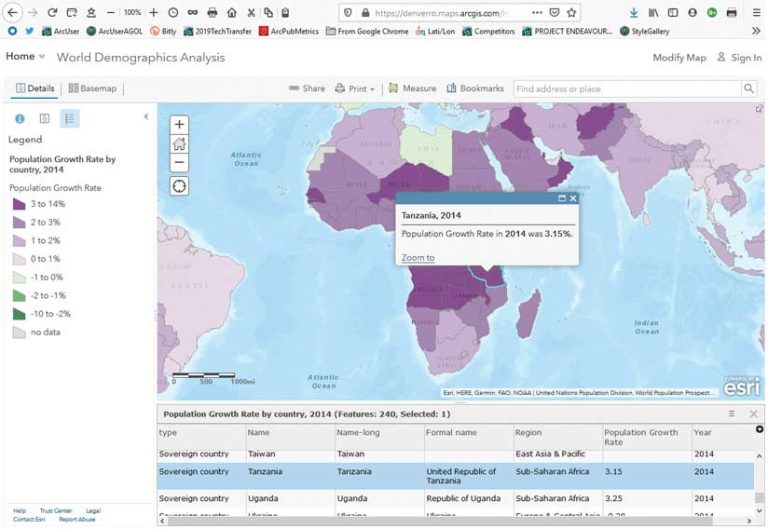
1. Examine world population and demographic data by country.
The ArcGIS Living Atlas of the World is a curated and growing body of content covering a multitude of scales. Population growth, ethnicity, density, cities, and other themes can be quickly accessed, combined with other layers of data, queried, and used in presentations. Many of the layers contain data that goes back in time; others contain forecasted growth and demographics.
This World Demographics Analysis web map includes some Living Atlas content and opens the door to investigating population growth rates, life expectancy, birth rates, and other variables. Some of the variables can be analyzed over time by opening the table associated with the maps and using the time animation slider. For additional analyses, modify the map below by clicking on it and adding other layers from the Living Atlas or ArcGIS Online.
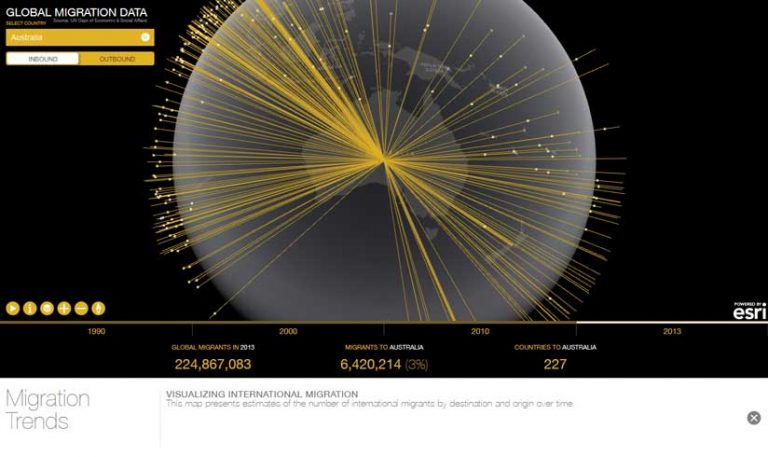
2. Visualize and understand migration over space and time in 3D.
The Esri Cool Maps gallery features this 2D and 3D map visualization of incoming and outgoing migration, organized by country, for four different time periods. The map presents estimates of the number of international migrants by destination and origin. The map uses a dataset called Trends in International Migrant Stock from the United Nations Department of Economic and Social Affairs.
This dataset contains a time series of estimates and projections of the number of international migrants in 232 countries or areas for the years 1990, 2000, 2010, and 2013. You can compare one country’s change over time in terms of both numbers and the places where migrants travel to and from.
For example, you can visualize the increase in immigration from South Asia and East Asia to Australia, relative to that country’s traditional immigration patterns from western Europe. You can also see the jump in Australia’s absolute numbers of migrants.
You can use the same map to investigate immigration to the United Arab Emirates (UAE), which supports the infrastructure development there. The map also will help your students understand the continuing challenges faced by Somalia caused by emigration from that country.
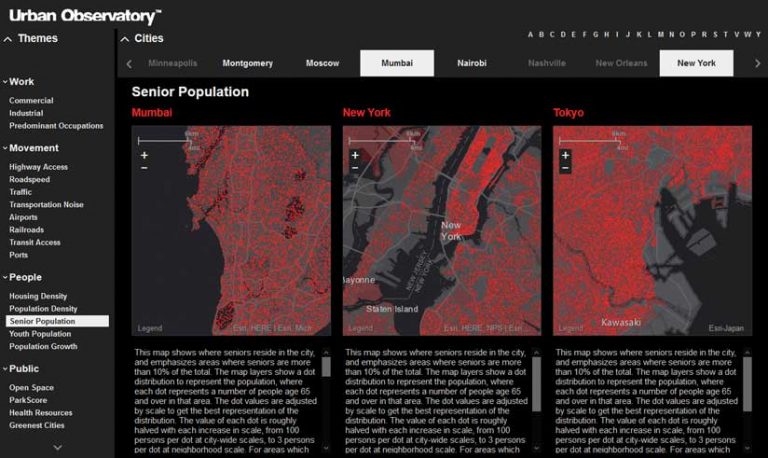
3. Examine demographic patterns in select cities.
Urban Observatory is a mapping and visualization app that enables you to compare conditions—including housing density, traffic, youth population, and open space—for more than 100 cities around the world.
The app is powerful and easy to use. Themes include Work (such as zoning), Movement (such as roads, transportation noise, airports, and traffic), People (such as population density and growth), Public (such as ParkScore scores and health resources), and Systems (such as current temperature and flood zones).
Click the Launch App button to compare the cities and themes of your choice. These cities will be displayed in three side-by-side interactive maps at the same scale. Because some variables are from real-time feeds, you can use Urban Observatory to teach students about commuting, time zones, and seasons.
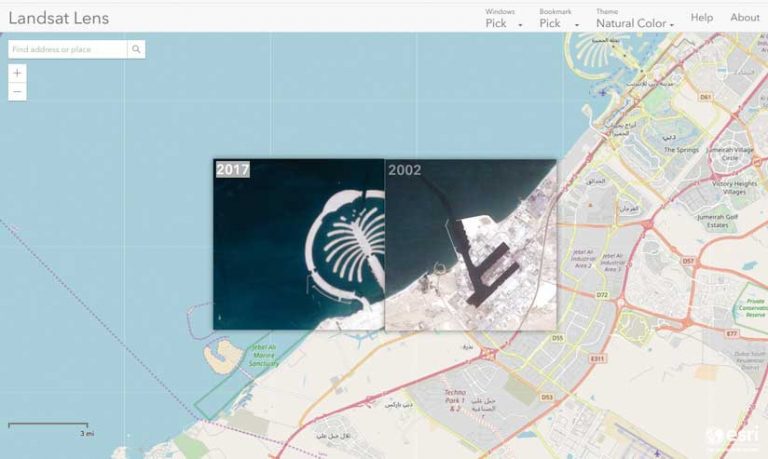
4. Examine regional change by using satellite imagery.
Easily detect regional changes to the landscape using Esri mapping tools such as the Swipe tool in the Landsat Explorer app and the Landsat Lens web mapping application.
Using Landsat Lens (no login required), you can explore any region of the planet, in several different wavelength band combinations for five different time periods. Use this resource to study urban growth, deforestation, volcanic eruptions, glacial retreat, agricultural expansion, and other natural and human-caused changes to the earth. You can study issues such as the expansion of the Sahara Desert southward into the Sahel, the drying up of the Aral Sea, and the continuous activity at Kilauea volcano in Hawaii.
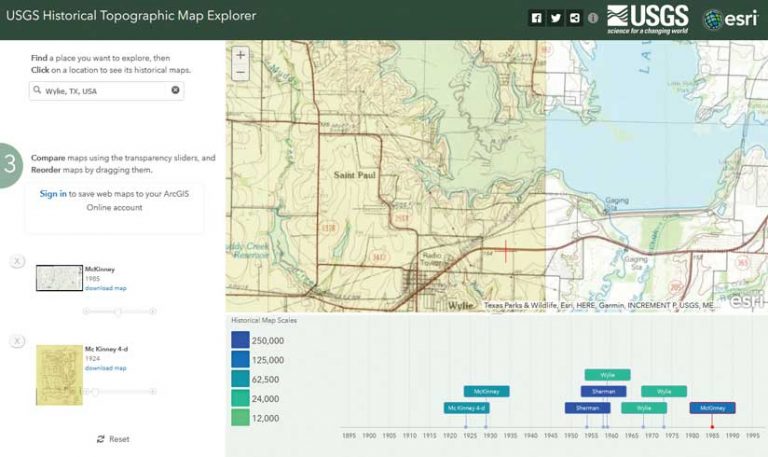
5. Investigate local changes using historical topographic maps.
With access to 75,000 historical maps, you can use US Geological Survey (USGS) Historical Topographic Map Explorer to quickly examine changes in your own community and others across the United States. These maps, available at a variety of scales, cover a century of geographic history.
Use the Search box to find places. Transparency and timeline tools make the app easy to customize and use to investigate places. No login is required. Study how the area around your school or university has changed, and examine that growth in relation to growth in communities nearby or across the country. The web mapping application has been updated so you can easily save these maps as web maps in your ArcGIS Online account.
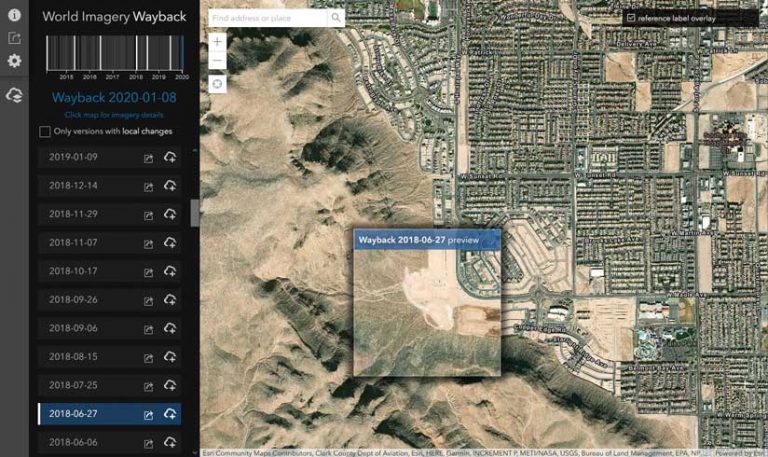
6. Use satellite imagery to investigate local changes.
The World Imagery Wayback app contains high-resolution global satellite imagery for the past year. The imagery is stored in ArcGIS Online. The app opens with an image of Las Vegas, Nevada, where change has occurred rapidly over a short time period. You can easily see the direction and magnitude of urban sprawl.
Use the app to examine changes in specific places such as coastal erosion in England, the construction of the Three Gorges Dam in China, and the results of wildfires in Australia and California. Investigate phenomenon such as urban sprawl, landslides, and volcanic activity. Even look at construction that may have occurred at your school or university.
You can use the app on its own or use it with ArcGIS Online by clicking the plus sign to the right of each image layer to save it. Add this imagery to ArcGIS Online maps, and combine it with other layers on population change, cultural features, ecoregions, and elevation.

